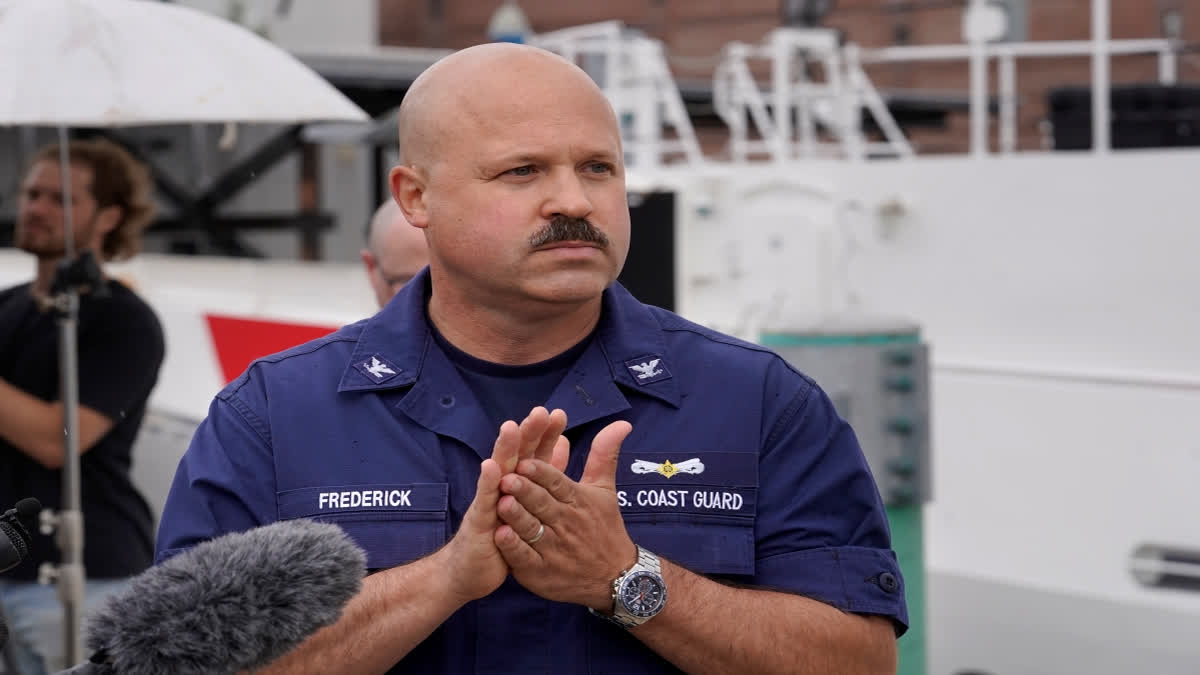US: In a race against the clock on the high seas, an expanding international armada of ships and airplanes searched Tuesday for a submersible that vanished in the North Atlantic while taking five people down to the wreck of the Titanic.
U.S. Coast Guard officials said the search covered 10,000 square miles (26,000 square kilometers) but turned up no sign of the lost sub known as the Titan. Although rescuers planned to continue looking, time was running out because the vessel would have less than two days of oxygen left if it is still intact and functioning.
"This is a very complex search, and the unified team is working around the clock," Cpt. Jamie Frederick of the First Coast Guard District in Boston told a news conference. Frederick said the crew would have no more than about 41 hours of oxygen remaining as of midday Tuesday. That means its air supply could run out Thursday morning.
He added that an underwater robot had started searching in the vicinity of the Titanic and that there was a push to get salvage equipment to the scene in case the sub is found. Three C-17 transport planes from the U.S. military have been used to move commercial submersible and support equipment from Buffalo, New York, to St. John's, Newfoundland, to aid in the search, a spokeswoman for U.S. Air Mobility Command said.
The Canadian military said it provided a patrol aircraft and two surface ships, including one that specializes in dive medicine. Authorities reported the carbon-fiber vessel overdue Sunday night, setting off the search in waters about 435 miles (700 kilometers) south of St. John's. At the helm was pilot Stockton Rush, the CEO of the company leading the expedition. His passengers were British adventurer Hamish Harding, two members of a Pakistani business family and a Titanic expert.
The submersible had a four-day oxygen supply when it put to sea around 6 a.m. Sunday, according to David Concannon, an adviser to OceanGate Expeditions, which oversaw the mission. CBS News journalist David Pogue, who traveled to the Titanic aboard the Titan last year, said the vehicle uses two communication systems: text messages that go back and forth to a surface ship and safety pings that are emitted every 15 minutes to indicate that the sub is still working.
Both of those systems stopped about an hour and 45 minutes after the Titan submerged. "There are only two things that could mean. Either they lost all power or the ship developed a hull breach and it imploded instantly. Both of those are devastatingly hopeless," Pogue told the Canadian CBC network on Tuesday.
The submersible had seven backup systems to return to the surface, including sandbags and lead pipes that drop off and an inflatable balloon. One system is designed to work even if everyone aboard is unconscious, Pogue said. Eric Fusil, director of the University of Adelaide's Shipbuilding Hub, said there are other scenarios that could cut communications, including an electrical fire that could create toxic fumes and render the crew unconscious.
Another possibility is that Titan became entangled in the wreck of the Titanic and is stuck there, Fusil said. "What I would like to believe ... is that Titan suffered from a power loss, but they could still go back to the surface" and be spotted by aircraft and ships, he said.
